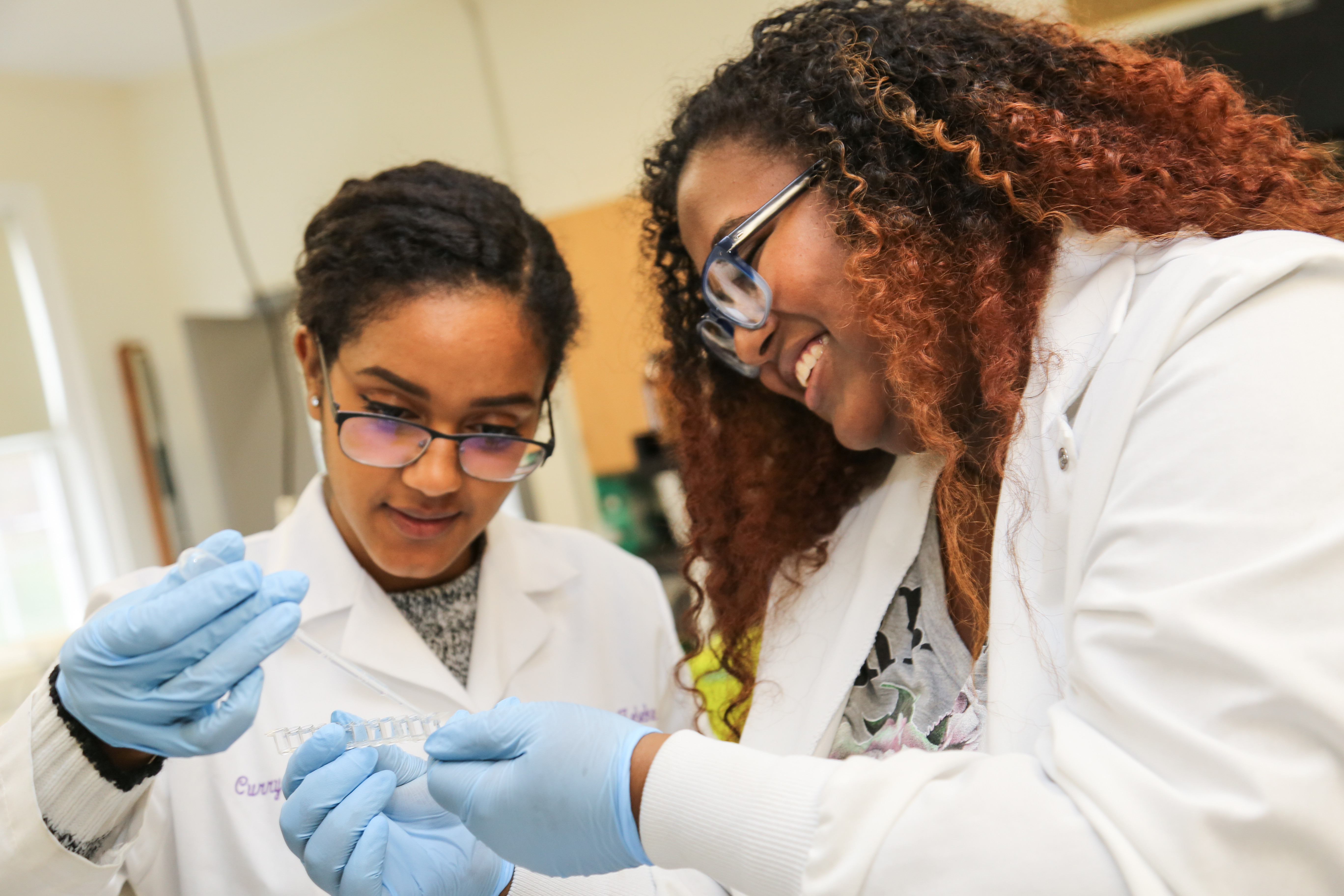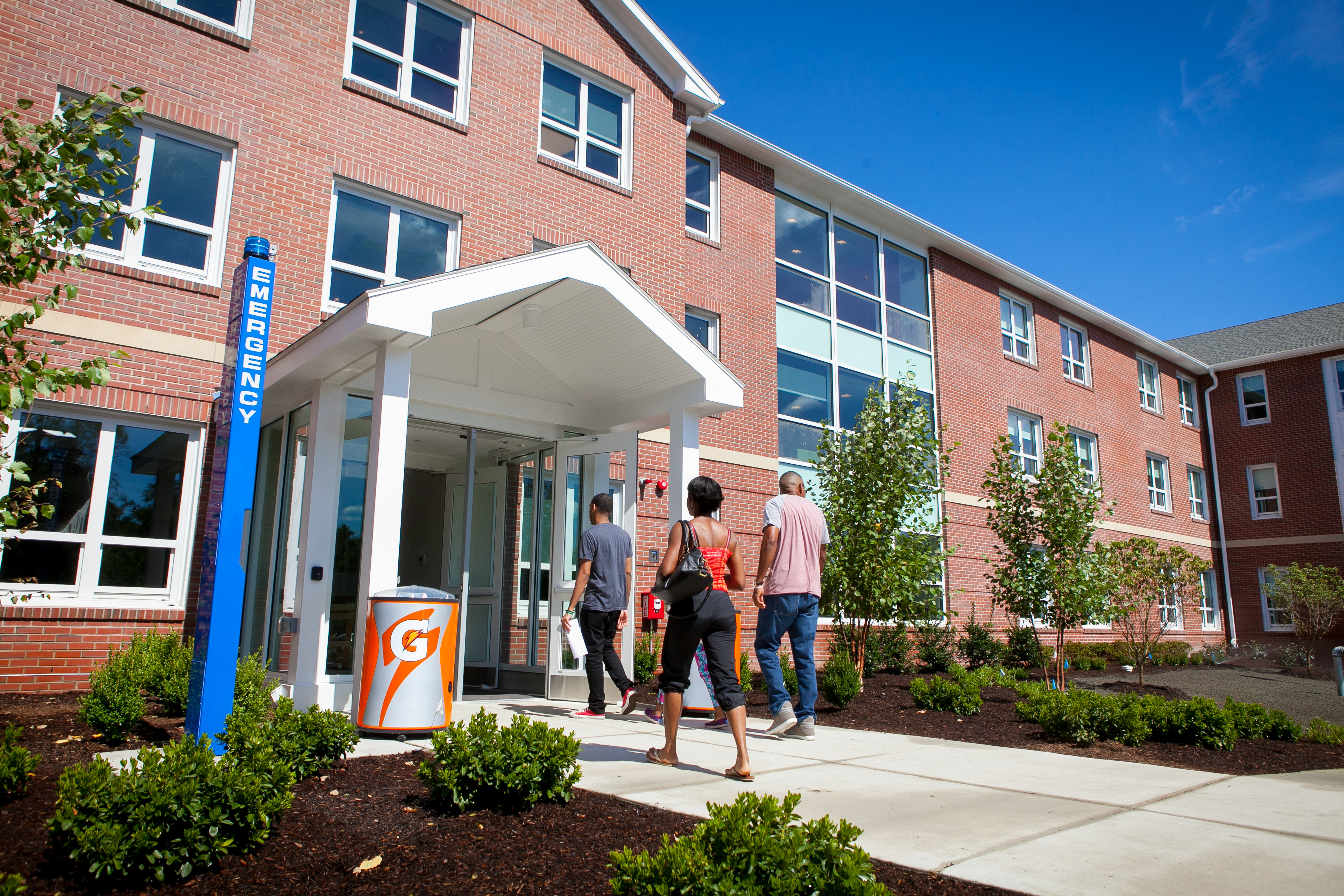Vision in Action 2018 - 2022


Direction I – Offer Distinctive, Relevant, Rigorous Academic Programs of Quality
Initiative A: Develop a balanced academic portfolio.
-
Continue program development work with a focus on achieving a fiscally balanced and actively managed portfolio of programs that respond to market opportunity as evidenced by student and family demand. -
Leverage program reviews, curriculum assessments, and contribution analyses to inform sustainability of existing academic programs and strategic importance of new programs through a targeted allocation of resources. -
Explore benefits and costs of launching additional schools based on proposals developed by academic units following criteria outlined by the Schools Task Force, and informed by the assessment of the School of Nursing pilot.
Initiative B: Increase and enhance business, civic, and alumni partnerships with academic programs.
-
Strengthen business and civic partnerships that provide for internships, job placement, and curriculum-based field experiences, supporting integration of applied and experiential learning throughout the curriculum. -
Assess current academic program advisory boards, including charge, membership, and actions necessary to ensure their effectiveness in advancing strategic performance indicators. -
Standardize structure, expectations, and assessment of academic program advisory boards, and establish boards for programs.
Initiative C: Strengthen technology and curricular support for traditional, hybrid, online, and clinical instruction as well as for online testing and assessment.
-
Establish benchmarks for faculty and students that demonstrate proficiency in technology. -
Increase faculty and student development to support innovative course design and delivery, enhance learning, and enable post-graduate success.
Initiative D: Re-establish PAL as the leading program for students with learning differences.
-
Develop a strategic plan and corresponding economic model for PAL that responds to current needs of students and market demands of students and families. -
Use technology to support the innovative delivery of PAL programs and services. -
Increase the visibility of PAL in the professional field of learning differences education at all levels.
 
Direction III - Foster an Inclusive Campus Community that Attracts, Respects, Supports, and Celebrates Diversity in Multiple Forms
Initiative A: Promote educational experiences focused on fostering a safe and inclusive learning community and graduating active citizens committed to equity, inclusion, civility, fairness, and respect.
- Expand training and resources for faculty, staff, and students focused on creating a safe and inclusive campus.
- Promote, highlight, and coordinate programs and events celebrating the richness of diversity within the community.
- Assess and enhance the curriculum, where needed, to embody issues of diversity, inclusion, and equity.
- Advance collaborations with external organizations and businesses to provide internships and service learning opportunities that increase an understanding of diverse populations.
- Increase awareness of anti-discrimination policies, protocols, activities, and responses related to bias incidents and hate crimes
Initiative B: Continue the commitment to embed the values of equity, respect, and equality throughout the community.
- Assess the physical presence and impact of the efforts supporting the Office of Diversity and Inclusion and make changes as needed.
- Celebrate a culture of diversity and inclusion on campus through images and statements that reflect and reaffirm the richness of diversity in our college community.
- Set up structures and programs to encourage respectful conversations and civil discourse that support diversity of thought and expression about controversial issues.
Initiative C: Increase diversity within the community.
- Increase targeted efforts to generate diverse pools of applicants when staff and faculty position openings at the College occur.
- Implement a continuous improvement plan to refine and strengthen the faculty and staff search processes.
- Establish efforts to support and retain diverse faculty and staff.
- Continue efforts to support and retain diverse students.
|


Direction II - Attract, Educate, and Graduate Students Prepared to Engage in a Complex and Changing World
Initiative A: Create, implement, and assess a comprehensive, integrated enrollment plan.
- Develop and implement a multi-year enrollment plan for traditional, continuing education, and graduate students that includes recruitment and retention goals by constituency; major/program; targeted demographic groups; and geographic regions.
- Continue to implement and evaluate the Retention and Student Success Plan.
- Align enrollment strategy with net tuition revenue goals, institutional priorities, and mission.
- Assess the College's strategic enrollment management infrastructure and adjust as needed to ensure effective strategic enrollment management and student success.
Initiative B: Communicate the value of a Curry degree.
- Create, implement, and assess a brand marketing plan that communicates the value of a Curry degree, is aligned with the College's mission statement, and helps drive revenue through enrollment, student success and fundraising.
- Identify and demonstrate the value proposition for each academic program.
- Increase the College's ranking in the U.S. News & World Report Best Regional Universities - North category to achieve tier one, numerically-ranked status.
- Assess the College's marketing and communication infrastructure and adjust as needed to maximize the impact of human resources and marketing placements.
- Create, implement, and assess direct marketing plans and tactics across the lifecycle from student recruitment and enrollment to alumni friend raising and fundraising.


Direction IV – Strengthen a Culture of Organizational Sustainability, Integrity, and Accountability
Initiative A: Implement multi-year financial planning and develop a comprehensive and integrated model that incorporates macroeconomic factors, institutional priorities, and primary economic drivers.
- Align the College's multi-year financial model with workforce, infrastructure, and program needs associated with the multi-year enrollment plan and priorities of the Strategic Plan.
- Incorporate revenues projected through annual and comprehensive fundraising campaigns into the multi-year financial model.
- Create and implement financial models that align cost and revenues for programs and activities to increase efficiency and effectiveness.
Initiative B: Create and execute a campus development plan to ensure campus facilities align with and support the College's Mission and Strategic Plan.
- Construct an academic building focused on integrating academic support, strengthening science and science related majors, and providing high-tech classrooms that support dynamic and interactive learning and pedagogy positively impacting recruitment and retention.
- Design and create classroom and studio spaces to support specific academic program needs in strategically identified majors.
- Develop and execute a plan to identify and promote existing campus sustainability efforts and determine future sustainability opportunities.
- Develop a plan to enhance athletic facilities to support student-athlete recruitment and retention.
- Develop a plan to enhance and renovate residence halls to support retention and recruitment of residential students.
Initiative C: Increase philanthropic support through annual, capital, and deferred gifts that support the College's strategic objectives.
- Enhance Advancement's use of data to inform and improve effectiveness.
- Assess, and adjust as needed, the human resources in the Institutional Advancement department and the resources of volunteer networks to align with and meet strategic philanthropic objectives.
- Audit operations and conduct a feasibility study in the planning phase for a comprehensive fundraising initiative that supports the College's Strategic Plan.
- Develop and launch a comprehensive campaign informed by an operational audit and feasibility study.
Initiative D: Execute a Strategic Technology Plan with clear direction, priorities, and measurable goals aligned with the Strategic Plan.
- Build an integrated digital platform that strengthens our hybrid and on-line academic programs and is personalized, engaging, social, and informed by data.
- Leverage technology to transform business operations through agile systems, processes, and people who embrace continuous improvement.
- Continue to invest in infrastructure to support the digital transformation outlined in the Strategic Technology Plan.
- Redesign and redevelop the curry.edu marketing website and the my.curry.edu web portal; enhance business processes and develop the infrastructure to support both platforms.
Initiative E: Align organizational structure and human resources with strategic priorities in a rapidly changing environment.
- Develop a pay for performance plan program that incentivizes employee performance and rewards employee efforts and contributions linked to position expectations and goals.
- Continue to align organizational structures to the strategic priorities.
- Conduct a staff training needs analysis that identifies potential skills gaps, provides resources to maintain competencies for effective performance, and facilitates continuous improvement.
|